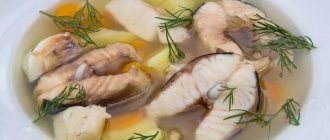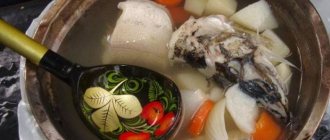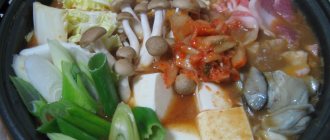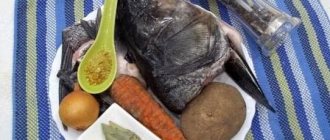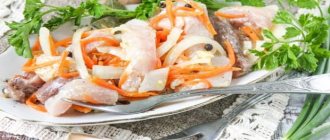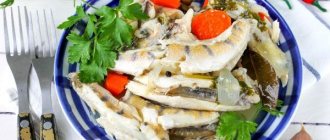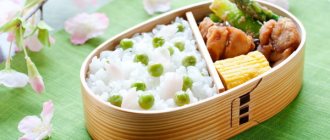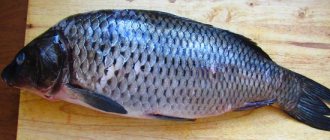Tips for making gyudon
If you can't find thinly sliced or shaved beef, you can buy a cut of steak and place it in the freezer. Then just cut into pieces that flake like shavings, so you don't have to cut paper-thin pieces with a knife.
But you can usually find beef specially cut for these Japanese recipes in specialty grocery stores.
You can cut the onion into thin strips or rings; it doesn't matter because the onions will be well cooked.
You can use drinking sake, but I recommend brewing sake or Ryorishu because it is less sweet and specially brewed for umami recipes.
Short grain white rice is the best option for this recipe, but jasmine rice also tastes great because it has a light floral aroma and aroma.
However, keep in mind that the beef sauce is very flavorful from the dashi, soy, mirin and sake, so plain white steamed rice will soak up the sauce.
There is no risk of getting a bland dish!
Step-by-step preparation
By Japanese standards, the ingredients described should be enough for 3 servings. But Japanese portions are generally small. In my opinion, this is one “male” portion; for a woman it is perhaps too big. We tripled the Japanese proportions, the three of us ate, and somewhere we still had 1 portion left
It is important to remember that beef for gyudon must be fatty, and not necessarily expensive. Amount of soy sauce - 3-5 spoons
(For the Japanese, 3 is normal, but to a European, the dish will seem under-salted.) In addition to the ingredients given in the main list, shirataki (or shirataki) noodles were also used in preparing this recipe. It is an optional component even in Japan: it does not affect the taste in any way, but makes the consistency of the dish more interesting. This is a purely Japanese product, you can’t get it anywhere except specialized stores, and you shouldn’t try to replace it with any other noodles. Shiritaki is made from the very, very healthy konnyaku tuber and has no independent taste. It is consumed for its chemical composition, and not for its taste. By the way, if you are suddenly lucky enough to get not noodles, but konnyaku paste, which is more common outside Japan (it’s so gray), then you can also put it in gyudon, and that will also be delicious. Konnyaku is not cut with a knife (the knife gets stuck in it and sticks), but is pressed out from the main mass into small pieces of arbitrary shape with the edge of a bowl. The amount of water added in step 7 can make the gyudon have the consistency of both a soup and a classic main course in our understanding. Without water it is quite dry. 125 ml is the consistency for the second, 250 and more will be something like a thick soup. Well, and, of course, you should remember that gyudon is not served on its own, but placed on top of rice. It is often served with pickled ginger. If you use shirataki noodles, rinse them in cold water and pinch them into pieces about the length of an adult's finger. If you have perfectly sharp knives and you are able to cut raw meat to the thickness of handkerchiefs without additional tricks, then respect and respect to you, repeat the feat of the ancient Japanese and do it! For freezer owners, however, it will be better to freeze the cut of beef until it is firm. But hardening should not occur to a rock-hard state, but simply to make the meat easier to cut. The most convenient way to do this is with an electric disk slicing machine, but you can also use a good sharp knife with a wide blade. The thickness of the pieces is “the thinner the better.” The onion is cut into thin slices - petals. Soy sauce, mirin, sake and sugar are poured into a frying pan and brought to a boil (and the sugar dissolves). Add onion (and shirataki noodles, if using) to the just-boiled sauce and cook until translucent. After this, water is introduced and everything is brought to a boil. Thinly sliced beef is placed on top of the onion in the liquid (heat at maximum). The gyudon is covered with a lid and cooked for some time in this way until the beef loses its red color. And only after greying, the beef is mixed with the remaining ingredients and boiled to the desired consistency and degree of softness. Well, then there’s that famous break in Japanese logic: the finished gyudon looks like this, but it is served (not immediately after cooking, it will only be tastier) with rice, as in the final photo.
Best articles Margarita sponge cake in a slow cooker cooking time: 1 hour 10 minutes. preparation time: 35 min. number of servings: 10 pcs. Type of cuisine: European Type of dish: desserts and pastries Recipe suitable for: dessert. ingredients for recipe...
What is Gudon?
Gyudon (牛丼) (beef bowl) is a donburi-style rice bowl with thin strips of ribeye beef.
Gyu means beef and don is the bowl in which it is served.
The meat is cooked and braised in a delicious soy, mirin, sake and onion sauce and served on a bed of hot rice.
Learn more about Japanese donburi: Review of 15 Authentic Donburi Bowls and How to Use Them
The beef is then topped with onsen tamago (poached egg) and the whole dish becomes a creamy, meaty bowl of goodness.
Meat hotpot recipes provide inspiration for this dish, but since it is served in dongs (bowls), it is popular as fast food in restaurants and takeaways.
Every Japanese food court serves delicious gyudon because the combination of beef and onions is hearty and comforting.
This is one of the easiest recipes to prepare; If you know how to cook rice, you can cook this dish.
All you have to do is mix the sauce ingredients, add the beef strips and onions, cook the egg and serve with steamed rice.
Get the best rice to water ratio in rice cooker for white rice, jasmine, basmati
Doner: what is it?
Doner kebab - you can try it in any street cafe or restaurant in the country. Many Turks consider this dish one of the quick snack options. For others, doner replaces a full meal.
Best articles Chicken on rice bed
Doner is often made for picnics or regular gatherings with friends. Many Turkish women know how to cook doner kebab on their own without spending a lot of time on work.
The Turkish name for the dish is döner kebab. Translated, this means “turning (rotating) kebab.” The meat for the filling is cooked on large rotating spits, then cut into thin slices, cut into pieces, and placed on a flatbread along with herbs and vegetables.
Meat treats are common in many parts of the world. In Russia, the food is called shawarma or shawarma.
The Rotating Kebab is quite a filling meal. However, the percentage of calories in it is not too high. It all depends on the type of meat used in cooking. Traditionally, the filling is lamb.
However you can also use:
- chicken;
- veal;
- pork;
- turkey meat.
The most popular option in Russia is shawarma with chicken. 100 grams of this product contains only 176 calories.
| nutrient | quantity, g |
| fats | 7,7 |
| squirrels | 5,2 |
| carbohydrates | 21,2 |
How to Serve Gudon and Variations
Side dishes
Gyudon's delicious umami flavor pairs well with a bowl of hot miso soup. There's something about the comfort of miso soup that complements the richness of the onions and braised beef.
Many diners choose to start with miso soup as an appetizer, followed by Gyudon as a main course.
The beef is served in a dong (bowl) and is usually topped with beni shoga, a pickled red ginger that adds a bit of sour flavor.
Other popular side dishes for Gudon include:
- pickled vegetables
- gobo salad (burdock root)
- potato salad
- natto (fermented soybeans)
- green onions
- a raw egg
- soft-boiled or poached egg
- strips of nori (dried seaweed)
Egg is the most popular Gyudon filling of all time.
Egg has been added and eaten raw in the past, but in many countries, by law, restaurants are not allowed to serve raw eggs and instead serve poached eggs.
An egg adds a delicious and nutritious dose of protein and healthy cholesterol to an already filling dish.
noodles
Some people also like to make Gyudon more like noodle bowls, so they add shirataki noodles (konjac noodles) to the beef and onion stew.
This makes the taste of Gudon even richer.
The combination of noodles and rice is quite filling and a people pleaser because you get the best of both worlds: rice AND noodles.
Shirataki noodles are made from the konjac herb, so they are very low in calories and contain no carbohydrates.
Udon noodles with pork and vegetables
- Number of servings – 2.
- Cooking time – 35-40 minutes.
Kitchen appliances and utensils:
- cutting board;
- knife;
- pot;
- colander;
- wok pan
Ingredients
| Pork | 250-300 g |
| Udon noodles | 150 g |
| Bell pepper | 0.5 pcs. |
| Shiitake mushrooms | 5 pieces. |
| Garlic | taste |
| Green onion | 4 things. |
| Soy sauce | 3-4 tsp. |
| Ginger (dry) | 0.5 tsp. |
| Miso paste | 1 tsp. |
| Sesame | 1 tbsp. l. |
| Rice vinegar | 1-2 tsp. |
| Vegetable oil | for frying |
| Sesame oil | 1 tsp. |
Important! If you use dry mushrooms, you need to soak them for 1 hour.
Cooking steps
- For convenience, we measure and prepare all the necessary components. Finely chop the onion and garlic. Cut the pepper into strips. Cut the shiitake caps into strips.
- Cut the pork into pieces and marinate in a small bowl with rice vinegar, soy sauce, ginger and sesame oil for 20-30 minutes.
- Heat the frying pan high. Lightly fry the onion and garlic in vegetable oil.
- Pour the meat into the pan and fry.
- When the meat is fried and all the liquid has evaporated, add pepper and sesame seeds.
- We wait 2 minutes. Add miso paste diluted with water (30 ml).
- Also add mushrooms to the pan and stir.
- Add 100 ml of water, cover with a lid. Leave for 15 minutes.
- Boil the noodles in a saucepan, strain and rinse in cold water.
- After the mushrooms and meat are ready, add the noodles and mix well.
- Fry everything together for 5 minutes.
- Decorate the finished dish with chopped green onions.
Best articles Protein cookies
Video recipe for making udon noodles with pork and vegetables
All the intricacies of preparation can be seen in the video.
https://www.youtube.com/watch?v=4_IuNd-xP30Video can't be loaded because JavaScript is disabled: Fried udon noodles with pork and vegetables (https://www.youtube.com/watch?v=4_IuNd -xP30)
If you wish, you can replace the pork and prepare udon noodles with beef and vegetables, do not change the recipe, it will turn out no less tasty.
Gudon nutrition information
Gyudon is a completely healthy type of donburi. Even though Gyudon is technically fast food, it is much healthier than most Western fast food menu options.
If you're making the dish at home, you can always make it even more nutritious by making dashi from scratch and using fresh, lean beef slices.
Yoshinoya (as a dish), Japan's favorite Gyudon restaurant chain, conducted a study and found that people who ate Gyudon for three months did not experience any negative health effects.
There were no metabolic problems, weight gain or increased blood sugar levels.
Thus, it can be argued that Gyudon is a good food option even for those who are on a diet.
Beef is a healthy cut of meat because it is high in potassium, iron, zinc, and B vitamins. Additionally, red meat is an excellent source of omega fatty acids, which promote heart health.
Learn all about Sukiyaki Steak | recipe, cutting technique and flavors
Origin of Hudon
One of the most popular places to serve Gyudon is the Yoshinoya fast food chain, which has stores throughout Japan and some in the United States.
When most people think of Gyudon, they immediately associate it with Yoshinoya's delicious recipe.
But the history of this beef bowl goes back at least 150 years! Yoshinoya's owner in the late 1880s, Eikichi Matsuda, actually named the dish.
Did you know that eating beef was banned in Japan until the Meiji period (1868-1912)? After the ban was lifted, beef became a delicacy, and many new recipes appeared.
Gyudon was a fresh take on donburi and was the first one called Gunabe and it was more like a hot pot meal and it was flavored with miso.
The chef of the Isekuma restaurant in Yokohama first prepared Gudon's predecessor in the early 1860s.
The recipe was an instant hit and a few years later they changed the recipe and decided to season the beef with soy sauce, dashi and mirin and it became today's favorite gyudon.
Yoshinoya succeeded Isekuma and became the leading producer of gyudon in Japan.
Gudon was originally considered a cheap food, so it was popular among workers and single men who wanted a quick meal.
But over time, it has become a favorite of the general public and tourists, so these days you can usually find a bowl of this meat dish for around 500 yen.
